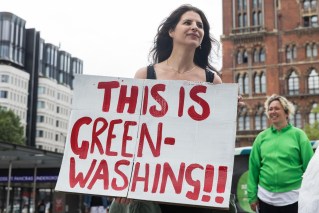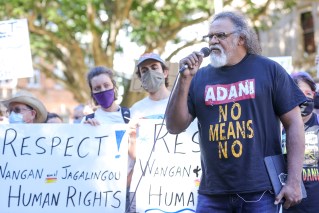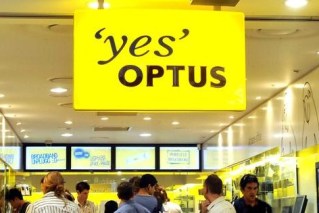Battle of Frog’s Hollow: Legal stoush unearths century-old land dispute
The unassuming Beatrice Lane, which cuts its way between Margaret and Albert streets in the Brisbane CBD, is protected by a heritage listing. It is also hotly contested real estate, writes Sean Parnell

Last week, the Queensland Court of Appeal paved the way for a civil trial brough by Orb Holdings against a neighbour, WCL (Qld) Albert Street, over the historic laneway between their properties.
WCL blocked off the lane in preparation for construction of a 91-storey tower, as tentatively approved by Brisbane City Council in 2016, prompting Orb Holdings to take the matter to the Supreme Court.
Orb Holdings argued Beatrice Lane was a public road, dedicated as such in the late 19th century, and could not be considered part of WCL’s site. Current development plans have WCL’s tower overhanging the lane, with access almost entirely in the company’s control.
Orb’s case was dismissed last year, prompting an appeal, which was successful. The matter is far from decided, however, with the trial set to pore over more than a century of changes to ownership and planning to determine the future of the lane.
According to Brisbane City Council, the lane was built around 1887 to service buildings on Margaret Street and by 1895 had been extended to Albert Street. Stonework was laid in two rows to provide a carriageway for the wagons and drays that used the lane, with a section of the stonework still visible at the Margaret Street entrance.
“This part of the CBD, bounded by George, Edward, Elizabeth and Alice Streets, was known colloquially as ‘Frogs Hollow’ because it was low-lying, swampy ground,” council has said.
“It also possessed a dubious reputation due to the presence of brothels and opium dens.
“However, given its proximity to the expanding wharf facilities located on the Town Reach of the river, the area rapidly developed as a warehouse and light industry precinct from the 1880s onward. The expansion of the business also reflected the economic boom of the 1880s. “The population of Brisbane almost tripled in this decade, which no doubt contributed to an increased demand in the goods and services offered by the many businesses that had access to Beatrice Lane.”

Beatrice Lane. (Photo: Brisbane City Council)
The area is set to undergo another revival with plans for a new Albert Street train station to service the Cross River Rail. Land underneath WCL’s site has already been acquired for the rail project and WCL – also known as World Class Land – will need to take the tunnels into account in its final plans.
The site at the centre of the legal stoush was originally owned by trustees of Brisbane Grammar School, who purchased land bounded by Margaret, Albert and Alice streets in 1874. Various planning changes followed – Beatrice Lane was a name only recognised late in the process – and in 2008 the land was sold to a developer before being sold again.
However, Justice Philip McMurdo found, and two other judges in the Court of Appeal agreed, that the trustees had left the lane in public hands. McMurdo questioned how a planning change in 2012 could have affected the lane, known as lot 11.
“Its purported effect was to close a different area of land, which had been marked on a previous registered plan as roads, by amalgamating them with what was then a single lot bounded by Margaret and Albert Streets, and Beatrice Lane,” McMurdo wrote.
“The boundaries of the subject land, lot 11, were not altered. It appears that the judge saw it as relevant that there was no note of a ‘Right of Way’ shown on lot 11, and that Beatrice Lane was shown as ‘the Reserve’. However, as I see it, the plan indicated that ‘Beatrice Lane’ was the land in question, rather than the Reserve. Be that as it may, the registration of this plan could not have divested the Crown of its ownership of lot 11.”
The council notes that Beatrice Lane is the last of its kind, with bitumen laid over any stonework on other lanes, if the lanes have not already been completely developed.
“From the late 1980s onwards, many of the CBD’s lanes were lost or reduced in size to make way for redevelopment of those parts of the CBD that they serviced,” the council has said.
“The clearing of the Roma Street Markets precinct (later to become the site of the new Magistrates Court) saw the demise of Little Roma Street. Parbury Lane was lost to the Brisbane Riverside Markets and Riparian Plaza redevelopment. Patrick Lane went with the construction of Admiralty Towers beside the Brisbane River. Old Burnett Lane disappeared when the Criterion Hotel was redeveloped as a high-rise building.
“Alvis Lane, running off Charlotte Street was also lost to high-rise redevelopment. The unnamed lane running between Queen and Elizabeth streets was resumed for the Myer Centre. The L-shaped service lane running off Queen Street in the block between George Street and North Quay, and the T-shaped lane running off Turbot Street in the block between George Street and North Quay have also been lost.”











